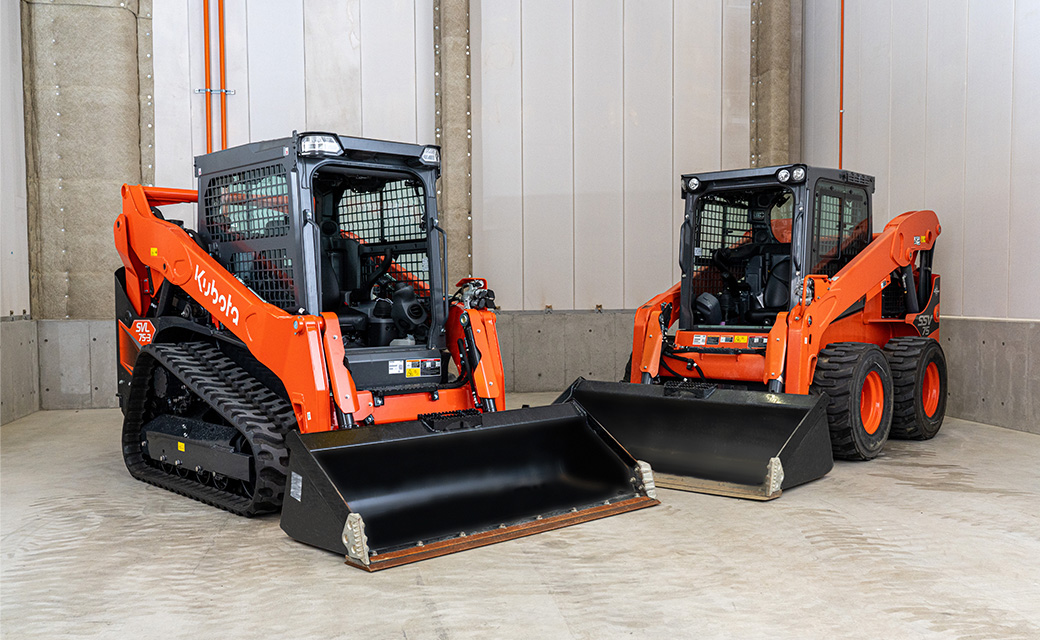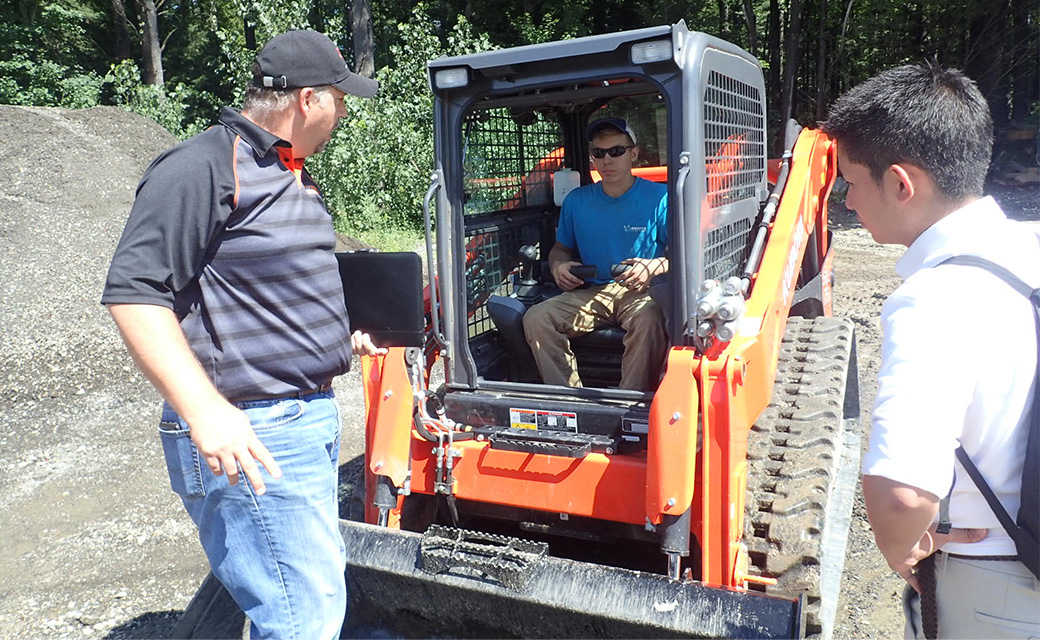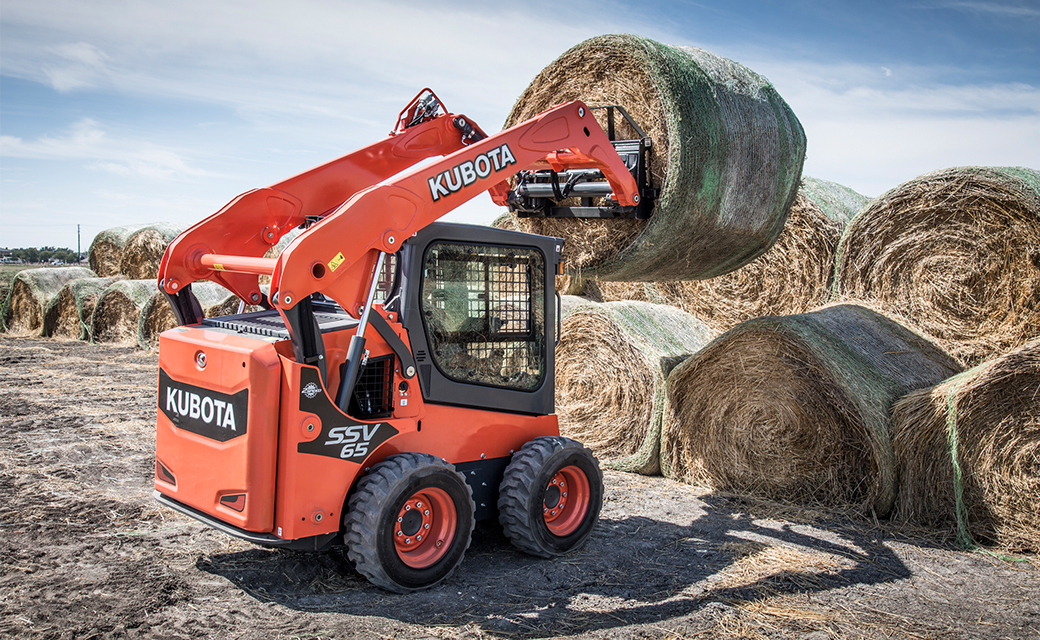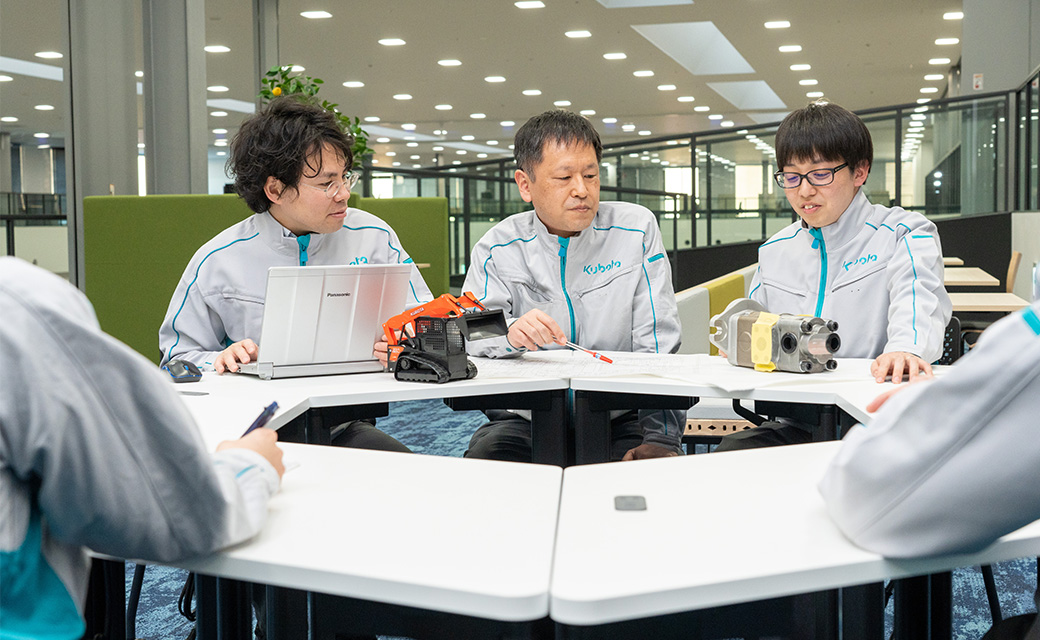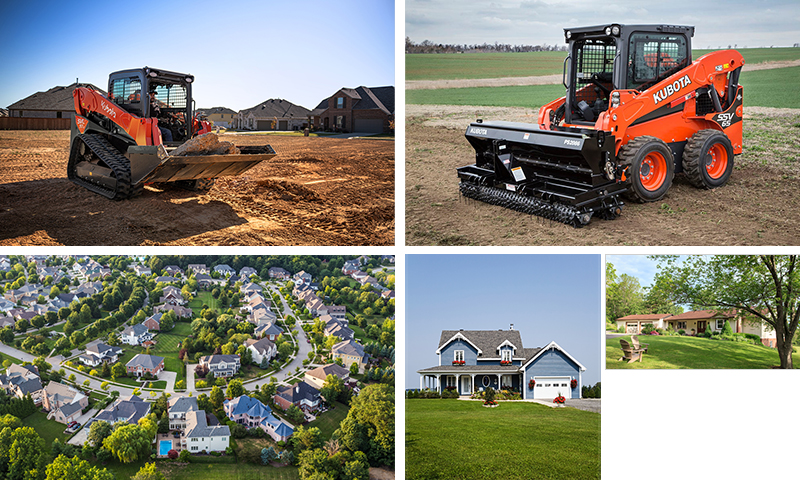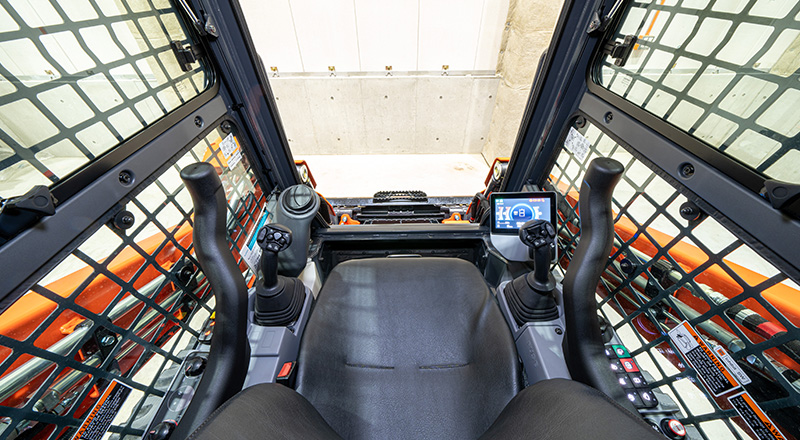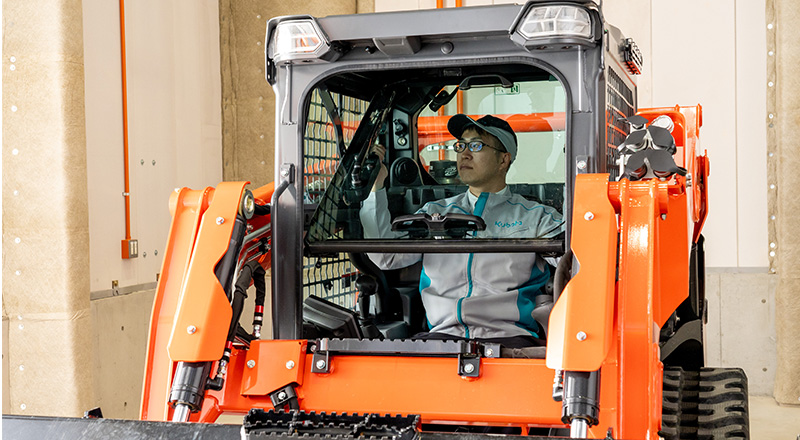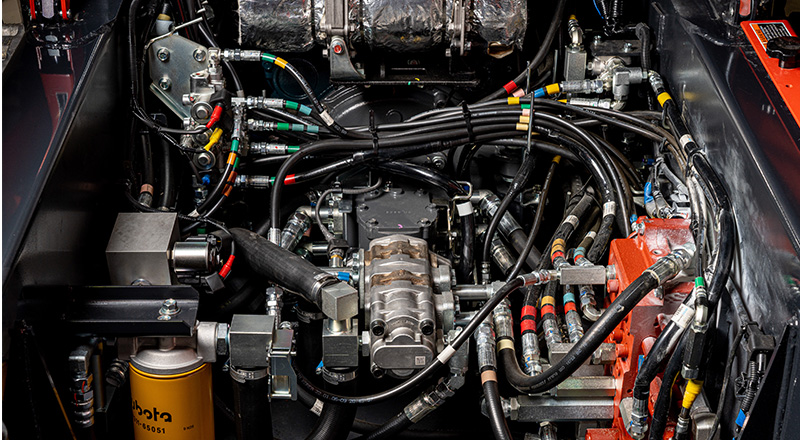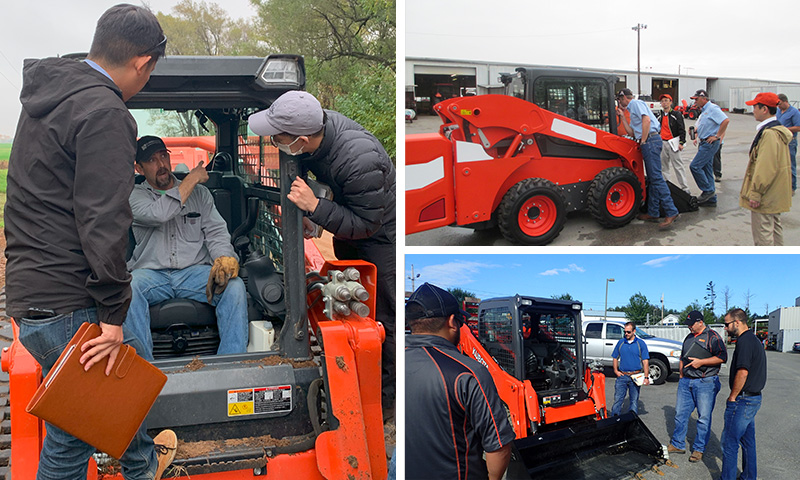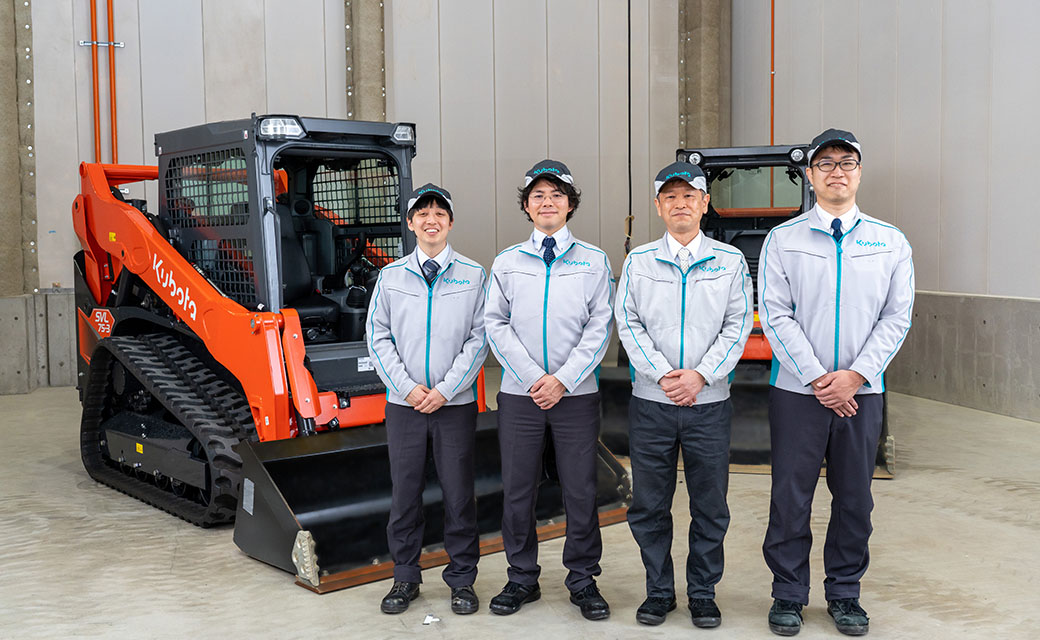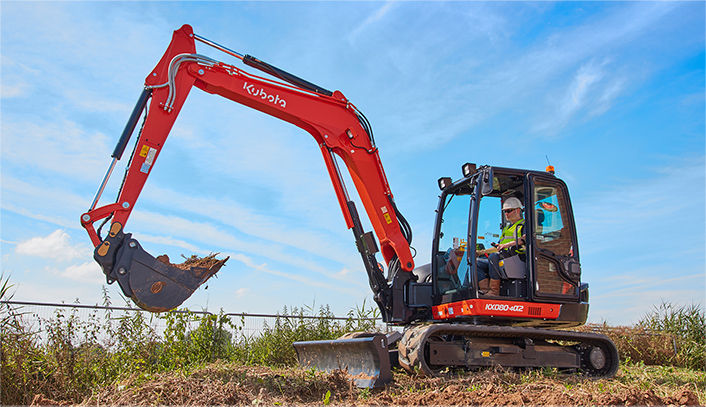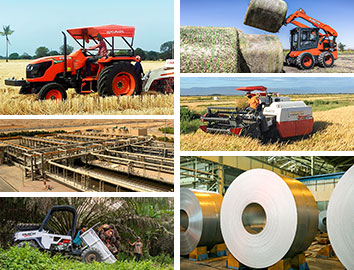Engineers Open New Markets: How Kubota CTLs and SSLs Became Operator-Friendly
Loader
The Compact Track Loader (CTL) and Skid Steer Loader (SSL) are compact construction machines that combine outstanding versatility with mobility. Both of these machines are in very high demand in the North American materials handling market. As neither machine existed in Kubota’s lineup, Kubota engineers took on the challenge of developing them from scratch. Tenacious surveying and an operator-focused development system led to user-friendly products that prioritize comfort in the working environment. CTLs and SSLs are employed for a wide range of applications, and Kubota is continuing its quest to further improve their quality so that they are even easier for operators to use.
Lifestyles and Housing Starts Provide Backdrop for Strong CTL/SSL Demand
The Compact Track Loader (CTL) and Skid Steer Loader (SSL) are compact construction machines that can perform digging, hauling, logging, and cleaning work by changing a part at the end of the arm called an attachment. CTLs use “crawler” belts while SSLs move with wheels, but both offer outstanding mobility that enables work in tight spaces and on soft terrain.
Many parts of North America have an established lifestyle in which people living in the suburbs with large properties spend their days off tending to their large home gardens and growing vegetables. This has created a firmly-rooted demand for CTLs and SSLs that are useful for such applications. What is more, housing starts have been growing steadily in North America since 2010, and demand for CTLs and SSLs has grown in accordance with residential construction.
Having already earned an excellent reputation in the North American market for its mini excavators, Kubota launched development of its CTL in 2007 to meet an even greater range of user needs as a comprehensive manufacturer of small construction equipment. It introduced the machine to the market in 2010, and in less than 15 years this product has become a major driver of growth in the company’s North American construction equipment business. But as you can imagine, such a hit product was not born overnight.
“Liberate Operators from Harsh Working Conditions” is the Motto
The engineers tasked with developing a CTL from scratch started by conducting thorough on-site surveys and studies on machinery from other manufacturers. They went all over the United States, sometimes following vehicles carrying other makers’ CTLs and asking their owners directly if they could observe the machines at work. They built up their knowledge by seeing with their own eyes how CTLs are really used.
In searching for how to design the best CTL, the Kubota engineers decided to focus on the working environment for the operators. This is a very harsh environment, with cramped seats and exposure to dirt and smoke. The CTLs available on the market tended to prioritize performance and were not designed for operators to work comfortably.
The Kubota engineers made their motto “let’s liberate operators from harsh working conditions.” With this wish in mind, they set out to develop a product that offered improved cabin comfort and serviceability while maintaining excellent basic performance – concepts that presented a conflict.
Kubota’s Combined Strength Achieves Operator-Friendly Design
To liberate operators from harsh environments, the Kubota engineers worked to realize three aspects: a spacious cabin in which any operator could work comfortably; flip-up doors that did not interfere with attachments and enabled communication with assistants outside the vehicle; and precision hydraulic tuning, the cornerstone of outstanding operability that is essential for construction machinery.
No CTL on the market offered all three of these features. Kubota was uniquely able to incorporate them into one product thanks to its collective strength that came from its involvement in a wide array of products.
For example, creating a spacious and comfortable cabin requires large, flat metal panels. The issue with these is that they tend to vibrate. To address this, the engineers turned to the production technology of the Sakai Plant. They modified the welding sequence and shape and applied tension to create vibration-resistant metal panels.
In addition, the cabin space needs the strength to withstand vehicle tipping and a field of vision with fewer blind spots to make work easier. The way the engineers balanced the conflicting elements of ensuring strength with a sturdy framework while offering an unobstructed view was by using a nontraditional tube configuration. This was proposed by an engineer with a background in agricultural machinery development, who said that adopting such a configuration, which was used in tractors and utility vehicles at the time, would enable a cabin that provided both strength and visibility.
CTL doors require light weight for easy opening and closing as well as strength to withstand vibration. In particular, making the flip-up style door that can be stored inside the cabin required overcoming several challenges, including not only the strength of the parts themselves but also layout adjustments and precision in assembly.
What became the driving force for overcoming these challenges was the Kubota development system. The CTL development process was joined by employees the manufacturing, customer service, and prototype departments who worked as engineers. This made it possible to ascertain from the early development stage the points that were non-negotiable for ensuring quality as viewed by each department. As a result, the development balanced out the contradictory elements such as strength, light weight, ease of assembly and layout, and achieved the challenging flip-up door that provides both ease of opening and strength to withstand vibrations.
One essential element for CTLs is superior operability that allows the movement of the machine to be closely linked with the operator’s control, as if the operator were moving his or her own hand. The key to this is hydraulic tuning that controls movement.
To achieve operability with a better feel, Kubota went with engineers and took prototypes to a site where CTLs are used. This was done to have the machine tested by operators who would actually work with it and directly confirm how it feels to move. Based on feedback from the operators, the engineers discussed solutions and at times performed on-site adjustments of the hydraulics to determine the optimum tuning.
In the improvement of hydraulic tuning, the key factor was the wisdom of the engineers who had overseen the development of mini excavators at Kubota for many years. These machines, like CTLs, require precise hydraulic tuning. The participation of these engineers in the development of CTLs improved the quality of the tuning.
As exemplified above, Kubota engineers put their comprehensive capabilities to work to develop an operator-friendly CTL. However, the goal could not have been accomplished by the engineers alone. They took their prototypes to operators multiple times and had them put to actual use, receiving detailed feedback on the field of view from the cabin and the feel of the hydraulics, among other aspects, and incorporating these findings into the product. The Kubota CTL was crafted through a hands-on approach with multiple prototypes and feedback from real users.
The Kubota Monozukuri Approach that Revitalized the CTL & SSL Market
Kubota’s monozukuri (manufacturing) starts from a desire to solve the problems faced by customers who use the products. Having engineers go directly to the customer in order to make products that lead to solutions is the unique Kubota approach. One example is with development of the CTL, in which there is a great deal of tangible experience and feedback that can be gained in the field, such as temperature, soil quality, dust, and even the customers’ tone of voice and facial expressions. Kubota engineers worked hard to incorporate these elements into development so they could create a product that lives up to Kubota’s reputation for quality.
And there was no change in this approach with the SSL, which came after the CTL. Along with the CTL concepts of excellent core performance, comfort, and serviceability, development of the SSL also pursued ease of cleaning, as it would be used in environments such as dairy and poultry farming. These settings produce a great deal of debris, giving customers the challenge of having to clean the inside of the vehicle often.
As with the CTL, SSL prototypes were taken to sites multiple times, and various kinds of feedback were incorporated into the design. After the Kubota CTL and SSL were introduced, new products were brought to market one after another with operator-friendly concepts, and competition for development intensified. This indicates that Kubota’s products, designed with a local needs-based approach, were responsible for opening this market.
With current machines, Kubota is seeking to make products more in tune with diversifying user needs through advancements such as outfitting with an integrated cabin that offers a highly airtight structure and superior dust and sound resistance, as well as combining hydraulic and electronic control in order to enhance the products’ added value. We will continue to develop products that meet customer needs while adhering to a local needs-based approach, through which engineers go to the sites and see the circumstances for themselves.
